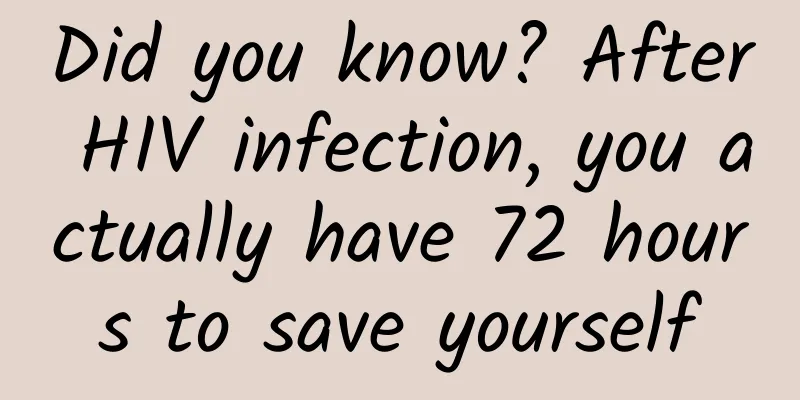This disease is widely hidden in the population, causing great harm, but few people know about it.

|
The cause of hypochondriasis is still unknown. Historically, it was regarded as a symbol of wisdom, but today's patients feel a great deal of shame about the disease. Written by Ye Yichu 01 What's wrong with mom? A few years ago, after my child was born, my mother came to Beijing from Yunnan to help me take care of the child. Everything went smoothly at first, but as winter came, the weather in the north was dry and cold, and my mother couldn't adapt to it. She caught a cold and had a fever. After she recovered from the illness, she changed. She used to love going out, but now she avoids crowded places for fear of infection. She even doesn't want to go to her favorite People's Art Theater drama because she is afraid of the crowds. Another big change in her is that she spends a lot of time looking up disease information online every day. The more she reads, the more scared she becomes. She worries that her immunity is not strong enough and that the air is full of mycoplasma, rhinovirus, respiratory syncytial virus... Her daily topics are almost all descriptions of the symptoms of many diseases that she thinks she meets. But even though she "hid" at home, she was infected again. The symptoms of this infection were more severe than before, and she even had symptoms of heart disease such as chest pain, palpitations, and shortness of breath. After calling an ambulance and rushing to the hospital, and after various tests, the doctor told me that my mother did have a viral infection (the condition was not serious), but at the same time, she also suffered from hypochondriasis. This was the first time I came across hypochondriasis from someone close to me. I had always thought it was a rare psychosomatic disease. But after some research, I found that hypochondriasis is not as rare as I thought. In medical settings, the incidence of hypochondriasis may be as high as 8.5% [1]. Its manifestations are varied, including fatigue, loss of interest, impatience, irritability or restlessness, palpitations, dizziness, tinnitus, pain in various parts of the body, numbness in the joints of the hands and feet, etc. These symptoms may come and go, but usually there is one symptom that is the most severe and persists. In addition, there is another characteristic, that is, the concern of hypochondriasis patients about their health is disproportionate to the severity of their symptoms, and these symptoms cannot be fully explained by physical illness. I didn't understand why my mom got this disease, but I thought that if I knew more about it, it might help me find the answer. 02 The past and present of hypochondriasis Hypochondriasis, also known as hypochondriasis, is actually a very old disease that can be traced back to ancient Greece. Hippocrates once recorded that hypochondriasis originates from the soft part below the ribs, which secretes black bile. Once there is too much black bile in the body, a series of symptoms such as hypochondriasis and depression will occur [2]. By the 18th century, the understanding of hypochondriasis had changed somewhat. The medical community believed that hypochondriasis was caused by "an overly fragile nervous system and the presence of some morbid substances in the blood" [2]. In the 19th century, Freud believed that hypochondriasis was a true neurosis rather than a psychological neurosis. And, like many of his other analyses, he linked hypochondriasis to guilt and sexual repression. It was not until the 1990s, as the understanding of the disease deepened, that doctors no longer viewed hypochondriasis as guilt about sexual and aggressive thoughts, but began to view it as a mental health problem, believing that it arose from long-term anxiety about health. Current research shows that hypochondriasis can actually be divided into two syndromes: illness anxiety disorder and somatic symptom disorder. Clinically, approximately 20% to 25% of hypochondriasis cases are illness anxiety disorder, and the rest are somatic symptom disorder [1]. Therefore, in the latest edition of DSM-5 (Diagnostic and Statistical Manual of Mental Disorders (Fifth Edition)), the diagnosis of hypochondriasis has been deleted, and patients who were previously diagnosed with hypochondriasis can almost all be diagnosed with somatic symptom disorder or illness anxiety disorder [3, 4]. Among them, disease anxiety disorder is mainly manifested in excessive fear and worry about the disease. When such patients hear that there is a 1% chance of getting sick, they often do not feel lucky that they have a 90% chance of not getting sick, but instead think that they are likely to be the unfortunate person who gets sick. Patients with somatic symptom disorder have clinical symptoms that are difficult to explain after adequate medical evaluation, or the severity of the symptoms is difficult to explain with existing organic diseases. For example, patients may have severe headaches and even suspect that they have a brain tumor, but professional examinations usually cannot find any organic diseases. At the same time, patients are deeply troubled by headaches, and this pain is not a performance or hallucination. In recent years, a new form of hypochondriasis has emerged: cyberchondria. Patients with this disorder spend a lot of time online researching diseases they think they may have. However, this behavior may increase the patient's anxiety. Studies have found that only a small number of people with low disease anxiety feel better after looking up symptoms online. Most people, especially those with higher anxiety levels, tend to become more anxious and depressed after looking up symptom information online [5]. In addition to liking to search for symptoms, studies have found that cyberchondria patients also pay close attention to healthy eating and have a certain degree of smartphone addiction. 03 From "desirable" to heavy stigma Throughout history, the public's understanding of hypochondriasis has undergone tremendous changes. Hypochondriasis was once considered a fashionable disease, a sign of intelligence and thoughtfulness. Some well-respected thinkers claimed to have the disease. For example, Kant, one of the greatest philosophers of all time, once called himself a hypochondriac. Another philosopher, Jacques Derrida, spent his life suspecting that he had various illnesses and declaring that death was imminent, but he eventually died of pancreatic cancer (a disease he had never suspected) at the age of 74.[1] For a long time, men with hypochondriasis usually lived in seclusion and were seen as rebelling against social norms; while in women, hypochondriasis was more like a group’s rebellion against social gender norms. In the books of the famous female writer Brontë and the “Angel with a Lamp” nurse Nightingale, they both expressed that physical discomfort and all symptoms similar to hypochondriasis were “the only excuse that could help women avoid becoming prisoners at home” [6]. In modern times, there are two polarized stereotypes about hypochondriasis. One is to regard hypochondriasis as "thinking too much", "too sensitive", "too weak", "poor stress resistance", "too pretentious", "too hypocritical", or even "whining without illness"; while the other extreme is to equate hypochondriasis with brain problems, making hypochondriasis bear the heavy stigma unique to mental illness. This sense of stigma is reflected in the way they seek medical treatment. Almost no hypochondriac patient will choose the psychology or psychiatry department for their first visit. They will first appear in the cardiology, neurology, gastroenterology and other departments, and will only find the right department after many changes. But for some patients, it seems to be much more difficult to accept that they have psychological problems than to accept that they have physical problems. They may think that the doctor's "level is not good enough", "the examination is not thorough enough", or "it is still in the window period and has not been found out", so they change doctors, departments, and even hospitals, seek medical treatment everywhere in vain, repeat the medical examination again and again, and refuse to accept the diagnosis again and again, falling into Sisyphus-like repetitive pain. 04 How to treat hypochondriasis Hypochondriasis should not be stigmatized. Although there is no organic disease that can explain the symptoms of hypochondriasis, it does not mean that all of this is an illusion. Henry Maudsley, a 19th-century British psychiatrist, said: “Sorrow that cannot be vented with tears may make other organs cry.”[7] If stress, loneliness, insecurity, and all these negative emotions are not fully expressed and relieved, but are suppressed, they will not dissipate on their own, but will accumulate until the body is overwhelmed and gradually manifest as various physical symptoms. If not intervened in a timely and appropriate manner, hypochondriasis can lead to alarming harm. One study found that the mortality rate of hypochondriasis patients was significantly higher than that of non-hypochondriasis patients, and the main non-natural cause of death was suicide; the risk ratio of all-cause mortality between hypochondriasis patients and non-hypochondriasis patients was 1.69, which means that during the study, the probability of death from natural and non-natural causes in the hypochondriasis group increased by nearly 70% [8]. Although the number of hypochondriasis patients who eventually committed suicide was not large, it did significantly increase the risk of suicide. These studies show that the harm of hypochondriasis is not only the huge medical expenses and the loss of labor force of patients, but also, like depression, bipolar disorder and other diseases, it can endanger the life of patients and cause irreparable losses. In view of this, more and more medical experts are calling for hypochondriasis to be a real and dangerous disease that should be given enough attention. 05 How to deal with hypochondriasis Currently, in clinical practice, doctors can treat hypochondriasis through cognitive behavioral therapy (CBT) and medication (antidepressants, antianxiety drugs, etc.). Medication is usually only effective for patients with emotional disorders such as anxiety and depression, and the main intervention method for hypochondriasis is still CBT [3, 9]. CBT can help patients establish the relationship between "thoughts-emotions-behaviors". For example, doctors can guide patients to try to replace the expression "I have a certain disease" with "I have an idea that I may have a certain disease" and gradually discover the gap between ideas and reality. At the same time, CBT encourages patients to record their thoughts and express their emotions through diaries and thought records. Many patients have reported that writing helps them think things through, identify the real concerns and worries, and the triggering events that cause hypochondriasis. On this basis, through behavioral activation, hypochondriasis patients can establish a connection between behavior and emotion, gradually master relaxation techniques, and learn to deal with it reasonably. The relatives and friends of hypochondriac patients can take the initiative to help them obtain various resources. This helps guide patients to focus their attention and energy on how to cope. For example, for patients who suspect they have leukemia, when they are caught up in repeated blood draws and worry about dying, you can try to accompany them to counseling and help them focus on their own coping abilities and methods. When facing patients with hypochondriasis, the most important thing for doctors and patients' relatives and friends is to show empathy in communication. Acceptance should be shown first, and then help should be provided. postscript My mother is a strong and independent person. She never thought that she would have hypochondriasis. She even couldn't believe it and didn't want to accept it. But after a period of psychological counseling and cognitive behavioral therapy, her health improved a lot. At present, it seems that she has completely gotten rid of the shadow of hypochondriasis. The cause of hypochondriasis is unknown, and there is no proven effective way to prevent it. It hides in the crowd and may hurt us or our loved ones at any time. Only by correctly understanding it and dealing with it can we defeat it. At the end of this article, I want to reiterate that hypochondriasis is a real and dangerous disease that should be taken seriously. Special Tips 1. Go to the "Featured Column" at the bottom of the menu of the "Fanpu" WeChat public account to read a series of popular science articles on different topics. 2. Fanpu provides a function to search articles by month. Follow the official account and reply with the four-digit year + month, such as "1903", to get the article index for March 2019, and so on. Copyright statement: Personal forwarding is welcome. Any form of media or organization is not allowed to reprint or excerpt without authorization. For reprint authorization, please contact the backstage of the "Fanpu" WeChat public account. |
<<: "Warm Baby" burns you without you noticing! When it's cold, be careful of low temperature burns!
>>: No extra steps required, just stick it on and it will charge
Recommend
How can information flow control page design and reduce advertising waste?
A design that can stimulate users' desire to ...
Zhangye Mini Program Customization Company, how much does it cost to customize an animation mini program?
There is no doubt that the topic of mini programs...
The 7-seater off-road SUV Roewe RX8 may be launched in the first half of this year
Recently, the preview image of SAIC Motor's n...
Entrepreneur Sun Ling shares 30 practical tips for entrepreneurship (Part 1)
Try to be radically candid Kim Scott's entire...
How to optimize account structure knowledge? What is the basic structure of a bidding account?
Many people don’t know how to optimize a Baidu pr...
Tmall 618 Shopping Festival promotion activities to make huge profits
Tmall 618 Shopping Festival promotion activities,...
Kuaishou live broadcast analysis!
“In the past, if you told gossip, your popularity...
Can the success of the Android mobile phone ecosystem be replicated in smart cars?
Even now, Microsoft still has a market share of o...
Xiaohongshu promotion skills and operation strategies!
I have to say that the speed of development of th...
Zhihu precise traffic diversion practice, case + implementation plan full sharing
Zhihu precise traffic diversion practice, case + ...
What? High heels are for men?!
This article was reviewed by Tao Ning, PhD, Assoc...
Temperatures in many parts of the south continue to "dive", and most areas in the north remain "chilly". Please note that large-scale rain and snow are coming!
Central Meteorological Observatory forecast: From...
SwiftUI State Management System Guide
Introduction SwiftUI differs from Apple’s previou...
What was the universe like before the Big Bang?
New research suggests that a new model of the uni...









